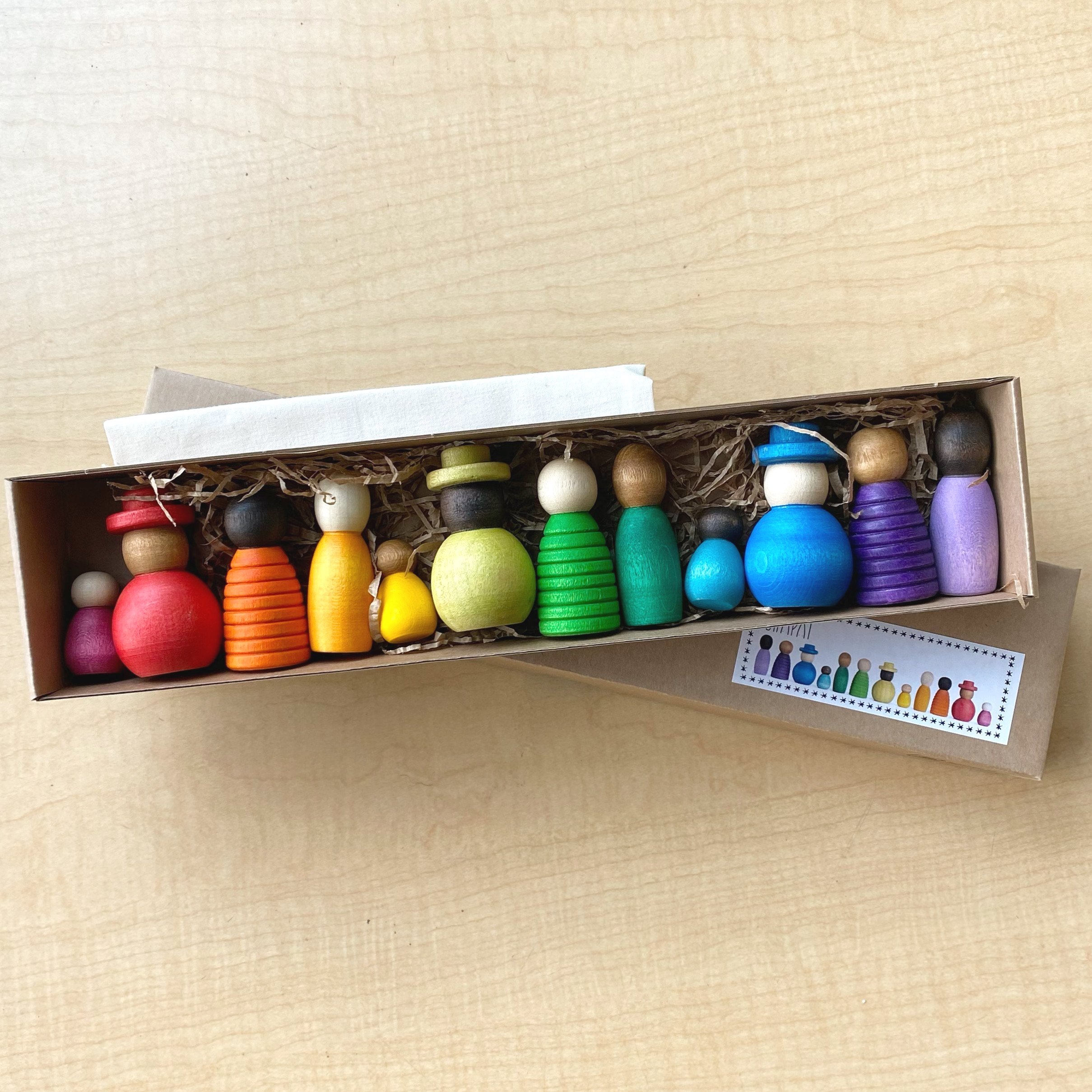Analog toys since 2006
100% kid powered toys. No bells, whistles, gimmicks, waste or commercial tie-ins.
Responsibly sourced. Mindfully made.
Kids play to learn. Let’s give them real tools.
Buy Less, Play More.


Find us in Portland @ 3808 N Williams Ave
-

Open-ended Toys.
Open-ended play at its core means there is no ‘right’ or ‘wrong’ way to play. An open-ended toy isn’t immediately just one thing. An open-ended toy done right is open to interpretation, left to a child’s imagination to assign their role in play. Overly detailed toys easily overpower a child’s imagination, deterring a child from fully engaging. If a child cannot anchor their imagination in a toy, their play becomes reflexive and more of a reenactment of what they’ve seen played out before (often screens) rather than a deep exploration of the world around them. Open-ended toys done right are driveable––purely driven by kid curiosity.
Since 2006 we have described our toys as the ‘Sticks, Stones, and Cardboard Boxes’ of today’s toys. Our toys are strikingly different from most. Walking up our steps you’re immediately hit with the smell of wood and the call of organic tones and textures. From every direction you’re pulled in for a closer look. This is exactly how open-ended play works. Open-ended toys pull a child in to explore more.
-

Real Tools.
Play is the work of childhood just as toys are the tools of play. Kids should be able to put toys to the test as they explore the limits of this world through play. Likewise, child’s play should be respected as important work. We feel toys should be of equal value to the real thing. When kids are trusted with real tools they play with reverence and deeply engage in their work. Analog toys like wooden blocks, magnifiers, loose parts, pottery kits, kitchen knives to camping stoves, if handled appropriately, are all tools that impart real life experiences from which to learn.
-

Child-led Play.
Our perspective on child-led play is quite different from today’s cultural interpretation of the phrase. Numerous recent articles today say ‘child-led’ play is letting your child lead so we can follow. In our view, this is missing the point. Child-led play is ‘self-driven play’––a child left to their own devices to engage and explore their surroundings through play.
This kind of magic we as adults should not want to disrupt. If a child on their own accord has managed to enter into deep, complex, imaginative play, we want them to stay there! We want to encourage they reach deeper into their own depths of discovery and wonder.
Child-led play encourages kids to safely test the world around them. It’s the key to learning. And if we as caretakers, with our formed adult minds––even with the best intentions, disrupt this magic, we run the risk of hijacking new pathways of discovery and growth.
We recognize adults in our culture feel the burden of needing to deliver all of the knowledge to their children. We here at SpielWerk give you the free pass to step into the background of your kids’ experience into the world. Hold a safe space and they will discover the world for themselves. Information delivered when it is not being sought is information not learned. Child-led play is learning through play.
-

Play to learn.
Kids do not play to learn, but it is through play that they learn the most. We always use the phrase ‘learn by doing’ when talking about our toys. We curate a thoughtful collection of quality toys and resource books from which to learn.
Everything we stock offers opportunity for experiential learning. Learning through play is unmatched by any other form of education. We’ve discussed the power of child-led play and real tools. Experiential learning is where these two factors meet. When a child engages in imaginative play as a ‘doctor,’ for example, they are trying on what it is to care for another, to put another first, to problem solve. Likewise, it is also a way to process their own fears of going to the doctor. By way of imagination, children go through the motions of learning by doing.
This process of ‘playing to learn’ achieved successfully in early childhood lends to later higher cognitive learning. We have to learn through our bodies first and later pair our cognitive learning with our anchored in experiential learning for the deepest understanding of things.
Imagination is the tool for experiential learning. When kids engage in group play, they discover themselves apart from the ‘other.’ In a group play setting kids are learning leadership, risk assessment, communication, and complex problem solving. All of this ‘playing to learn’ is unparalleled by any other form of learning and sets the tone for their future academic success.

the most effective kind of education is that a child should play amongst lovely things.
–– plato